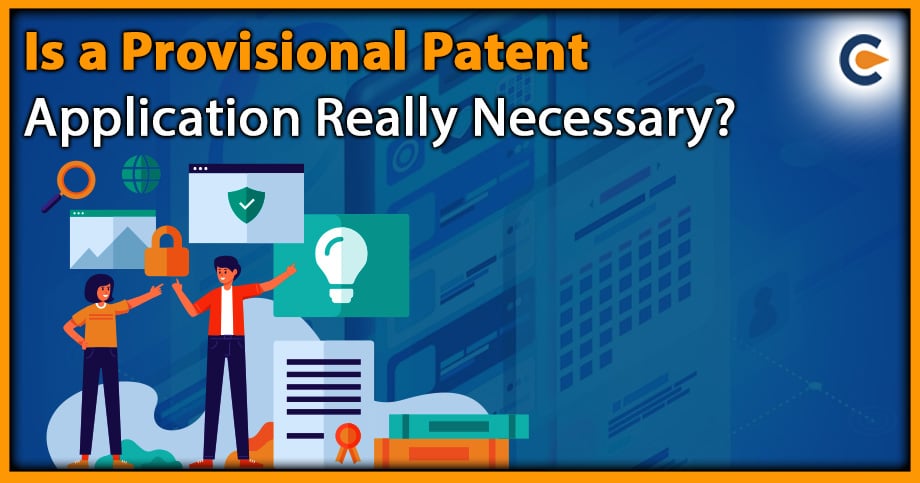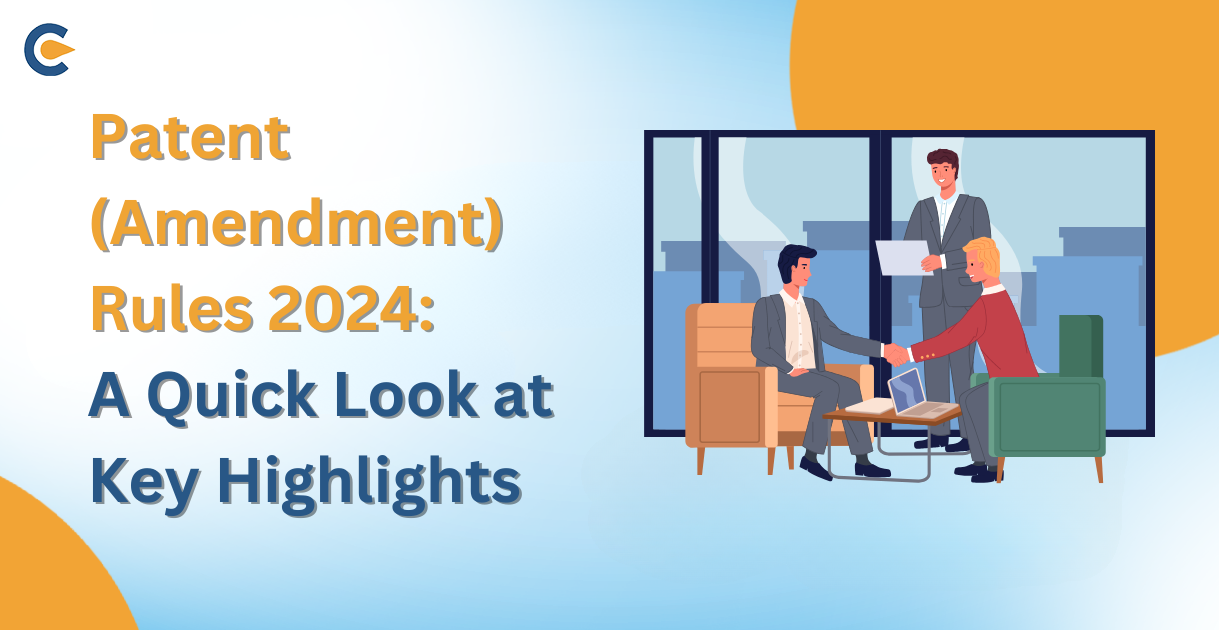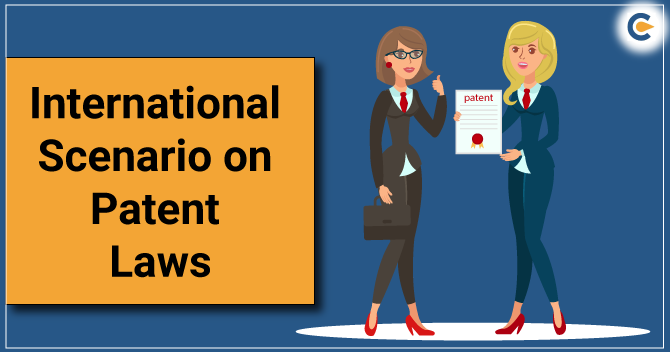The processes relating to provisional patent filings in India are governed by the Indian Patents Act of 1970. When a new and original creation with economic usefulness is granted a patent, the inventor gains exclusive proprietary rights. The only person who could profit from a specific innovation would be the inventor if it had a patent. The Patent Act of 1970[1] established a number of rules that support and aid patent experts and innovators in obtaining patents.
The Patent design is meant to accomplish two goals. First, the innovation must be made public so that it can be used once the patent has expired and it enters the public realm. Second, to pinpoint the components of the innovation for which the creator asserts exclusivity.
What is a Provisional Patent?
In comparison to a non-provisional patent application, a provisional patent application is a streamlined, casual submission. For instance, you don’t have to submit official claims or an inventor statement. A provisional application, in contrast to a (formal) non-provisional application, immediately expires one year after submission, is never tested for patentability, and does not develop into an issued patent.
With the USPTO and other patent agencies, an early submission date can be established using a provisional patent application. However, you must submit a matching non-provisional patent application within a year if you eventually want a patent to be granted.
Application extensions are not always the best course of action. However, when appropriately used, provisional applications can be crucial in building a patent portfolio.
What Is A Non-Provisional Patent?
A non-provisional patent is the opposite of a provisional patent application in that it is lengthy, intricate, and challenging to submit. A lengthy non-provisional registration is required. It has many components, and several rules govern each portion. A non-provisional patent is lengthy, has numerous intricate details, and has strict rules that can get you into trouble, even if you only violate one of them.
All the non-provisional application is worth the trouble. A non-provisional patent can issue a valid claim, in contrast to a provisional patent filing. Once your non-provisional patent is granted by the United States Patent and Trademark Office, then you will have exclusive rights over your invention and restrict others from creating the same thing. Then, anyone who creates a product with the same design violates your patent.
Filing a Provisional Patent Application Is Optional but Advisable
An innovation can receive security through a provisional patent application even before a complete design has been submitted. It takes a great deal of information about the idea to draft a complete specification. Most innovations require months of R&D (research and development) before being ready for market. If one waits to fully understand the innovation before filing the entire specification, obtaining a priority date might be too difficult.
Thus, the creator could establish a priority date by submitting the provisional specification along with the initial information about the innovation. Additionally, a provisional patent application is much less expensive to submit and does not require claims or diagrams of the invention. The inventor now has 12 months to work on the creation and to choose the claims after the provisional patent application is completed, after which the entire specification will be submitted. Therefore, the provisional specification serves to provide innovators with temporary security, giving them more time to work on the innovation.
The creator may even start advertising the goods as “Patent Pending” after submitting a temporary patent application. This would let the general public and possible rivals know that the inventor is still working on the product and trying to get it patented, so no one can copy it or try to sell it.
Why Should You File a Provisional Patent Application?
Although filing a provisional patent is not necessary but here are a few reasons through which you will understand the importance of a provisional patent:
- You Get More Time To Complete Your Invention
The use of the provisional application will lengthen the term of any patent that issues by that one-year window, assuming that a non-provisional patent application was submitted after the one-year window following the provisional application. This is due to the fact that a patent ends twenty years after the filing date of the initial non-provisional patent application. Therefore, the patent will end in 2041 if the preliminary application was submitted in 2020 and the non-provisional application in 2021. The resulting patent would end in 2040 if the non-provisional application had been submitted first, as opposed to 2039 if the provisional application had been submitted first.
- It Allows You To Work At A Particular Time And On A Limited Budget
Provisional patent applications have fewer procedures, less paperwork to file, and almost no layout specifications. As a result, a provisional application can frequently be produced and submitted more swiftly and for less money than a non-provisional application.
Businesses frequently find themselves in the position of having to submit a patent application before an impending product launch or show in front of a large audience. Provisional applications can be rapidly produced and submitted in these circumstances as a legal “best effort” to obtain a filing date.
Alternatively, startups might not have the financial resources to hire a patent counsel immediately to complete a comprehensive official patent application. When you submit a non-provisional application, you can make adjustments after preparing the best patent application you can, given the limitations you are working with.
The company can obtain some level of security in both situations by submitting a provisional application, which is frequently preferable to making no patent application.
- Determine The Value Of Your Invention
It’s time to look into the invention’s value. Sadly, most innovations created by one person are not profitable for the creator. The market for the invention either doesn’t exist, or the idea isn’t novel. We don’t want inventors spending a lot of money on the low-value idea. A provisional application can be submitted for less money upfront, allowing creators a year before a non-provisional application must be submitted. By attempting to sell the innovative product or persuading investors to invest in their business, the inventor can use this time to ascertain whether the creation has worth in the market. The patent attorney can then prepare the non-provisional application so that the inventor can come back, understanding that their money is being spent on an innovation that seems to have value if they discover during that year that the creation will have some value.
- Provides Protection To Your Patent
Even before the entire invention is disclosed in the complete specification, the invention is protected for a period of 12 months from the date of the provisional application.If the creator didn’t submit a provisional patent application, the chance to get temporary security would be gone.
- Worldwide Protection
By submitting a provisional design, a creator is able to submit parallel patent applications with the same priority date in other nations that are parties to the Paris Convention. The Paris Convention is a pact among a limited group of nations that have decided to recognize the precedence of patents among signatory nations.
Conclusion
Therefore, obtaining a patent while the idea is still being developed at a reasonable cost is possible with a provisional patent design. However, no unbending laws demand the submission of a preliminary specification. The company objectives also play a significant role in submitting a provisional specification. The only argument in favour of filing a preliminary patent application is that there is nothing to lose and much to gain. Contact Corpbiz right away with any questions you might have!
Also Read:
Rights And Obligations Of Patentee In India











